Say, I have a linear mixed-effects model:
## create data
iris$group = c(rep('A', each = 75),
rep('B', each = 75))
iris$id = rep(c(1:10), each = 15)
## assign contrasts
iris$group <- factor(iris$group, levels=c('A', 'B'))
(contrasts(iris$group) <- matrix(dimnames=list(levels(iris$group), c('.sum.group')), c(-0.5, 0.5), nrow=2))
## build the model
LMM = lmer(Sepal.Length ~ 1 +
Sepal.Width +
Petal.Length +
Petal.Width +
group*Petal.Width +
(1|id),
data = iris,
control=lmerControl(optimizer="bobyqa",
optCtrl=list(maxfun=2e5)),
REML = FALSE)
Now, I need to plot the interaction group*Petal.Width from the model using the function ggemmeans. Exactly this function must be used in my case. The documentation for the function says, it gives a standard ggplot-object as an output. However, I couldn't figure out how to adjust its aesthetics, and it seems that it's not exactly how ggplot would behave. Here is the best that I could achieve:
ggemmeans(LMM, terms = c("Petal.Width", "group")) %>% plot()+
geom_line(aes(linetype=group))+
aes(linetype = group)+
theme(legend.title = element_text(size=30),
legend.position = 'top',
legend.key.size = unit('1.5', 'cm'),
axis.title.y = element_text(size = rel(2), angle = 90),
axis.title.x = element_text(size = rel(2)),
axis.text.x = element_text(size=20),
axis.text.y = element_text(size=20))+
scale_colour_manual(values = c("orangered", "purple"))
Now, how could I at least
- Remove the thin dashed line behind the thick dashed one?
- Change the color of the confidence intervals to the color of the lines? (now the plot is using standard colors for CIs, whatever color I assign to the lines)
- Make sure these CIs reflect 95% CIs and not something else? (e.g., in a similar function plot_model, there's an argument for controlling this)

